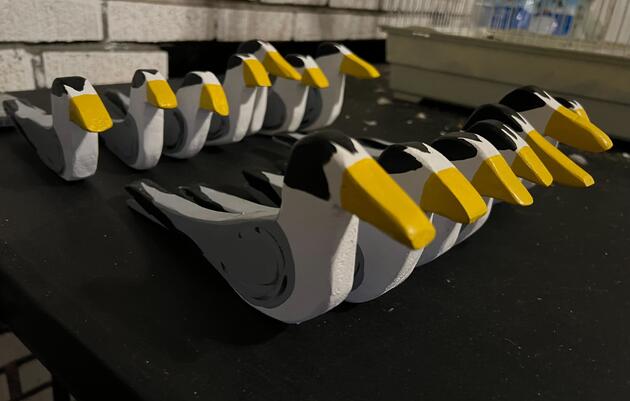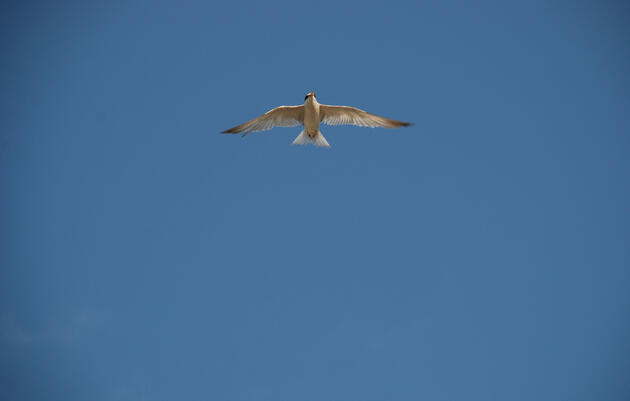Since 2015, a large colony of Black Skimmers nests successfully on North Lido Key in Sarasota every summer. The colony has moved to several locations in the seven consecutive years of nesting on the barrier island but always stayed within a half-mile section of the north beach. That is, until 2023.
This year, the skimmers spent all of April trying to establish a colony in a familiar area, a section of beach just north of the main North Lido Public Beach parking lot. While the site footprint looked nearly the same as it did during the 2020 nesting season, after a month-long process of courting and scraping (the behavior of digging a shallow depression in the sand where the pair lays its eggs) the birds abandoned the site.
Why? The most likely reason is predation. Fish Crows are the main predator of our beach-nesting shorebirds and seabirds in the Sarasota area. They are brilliant and effective predators of eggs and chicks. Due to the crows’ ability to recognize patterns, they have become familiar with what happens when the skimmers show up. As soon as they laid their eggs, we observed crows flying away with them. With this immediate and persistent egg predation, the skimmers could not settle —so they left. Fortunately, they did not have to travel too far. The colony moved just over a mile to the very south end of the island, on another public beach.
Moving to a New Beach Area
The landscape of South Lido Key Beach has changed significantly. In 2021, the county completed a large-scale beach renourishment project to replenish the heavily eroded beach following several intense storm seasons. The project resulted in an expansion of the beach and new habitat for the birds. That year, Least Terns and Snowy Plovers made their first nesting attempts on South Lido since 2013. When they successfully fledged chicks, their efforts marked the first successful season for Least Terns, a colonial nesting species, since nesting in this location has been officially documented.
The Black Skimmer colony in Sarasota is home to upwards of a thousand birds and requires an exceptionally large space. With the recent renourishment, the site at South Lido became large enough to support a colony that size and seems like great habitat despite new challenges, namely dogs.
Protection from Incoming Threats
South Lido Beach has always been very popular with boaters. Despite the established rules prohibiting dog visitors, and subsequent efforts by the county to amplify the message with additional signs on the beach, many boaters still took their dogs because they didn’t see the signs. Volunteer bird stewards recorded 161 dogs at the Lido Key nesting sites this season. Recognizing that this remained a big issue, this year stewards donated signs that boaters could see along the shoreline stating that dogs were not allowed on the beach and to designate a "No Boat Zone" where the skimmers and their chicks rest at the shoreline
Successful Season
Skimmers, among many other species of seabirds, have a strong site fidelity, meaning they will return to the same beaches year after year if they are successful. Despite the challenges, this was a banner year at South Lido—the nesting colony produced at least 310 chicks, representing the largest and most productive Black Skimmer colony in the entire state. It is highly likely that the Black Skimmers will return next year. We hope that South Lido will be the new skimmer spot and that the colony will continue to produce chicks in the future.
Did you know that you can protect sea and shorebirds nesting on Florida beaches? Consider joining our volunteer flock.







